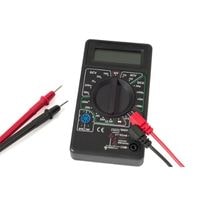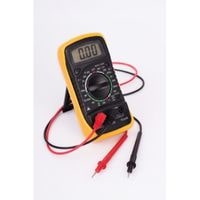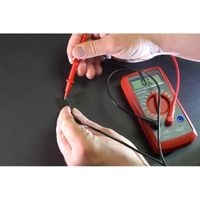How to test a thermocouple. The thermocouple is a gas safety device that is vital for many appliances that burn gas like cooking tops, furnaces, and boilers.
When something goes wrong with a thermocouple, it prevents the appliance from running by not allowing the gas to be turned on because the pilot light has failed or there is no flame present on the food-burning surface of a stove.
The thermocouple acts as an electrical switch that uses heat to achieve a millivoltage then, this voltage moves through wires inside an inner pipe to either open or close the gas valve located outside of the appliance.
How to test a thermocouple

Test a thermocouple by using a multimeter. If you still have doubts about your furnace and whether or not the thermocouple is working properly, ensure that it is functioning correctly by checking it with a multimeter.
This can help to ensure the safety and better functionality of your furnace in order to keep your home warm throughout the chilly winter months.
Thermocouples are located on the Gas control Thermostat
The gas control thermostat will be on the outside of the gas tank, possibly near a nearby wall. Look for a flexible tube plugged into the side of the thermostat, which is often colored silver or red.
The tube typically connects to the gas valve below the pilot light.
The Thermocouple should be removed with a Wrench
Using a 7⁄16 in (11 mm) wrench, loosen and remove the nut holding the thermocouple in place.
After removing the old part, install the new part by applying a thin bead of pipe joint compound or Teflon sealant around the base of the new thermocouple and threading it into place with a 1⁄4 – 20 tap.
Be sure to clean both surfaces with a damp rag before installing the new thermocouple.
Switch on the Multimeter

For the test, the type of multimeter with red and black clamps is the easiest to use.
Flip on the multimeter’s power switch. Spin the settings dial to change the measurement to Ohms, represented by the horseshoe-shaped symbol.
This is used to measure electrical resistance; it indicates whether something is an insulator or a conductor.
For more specific instructions on operating your multimeter, read the owner’s manual.
Connect the leads of the Multimeter and test it
Hold the black and red clamps, or leads, apart. When you point them in opposite directions, the meter should stay to the left at infinity.
Bring the leads together and watch as the meter changes to 0. If it does not reach 0, note where it is closest to 0 and adjust accordingly.
Thermocouple Leads are attached
Clamp the black lead over the thermocouple’s top end, which is what you removed from the thermostat earlier and looks like a rounded nub.
Take the red lead and clamp it to the tubing below the nut on the thermocouple. It is either silver or copper in color, and you should clamp right above it on its own individual wiring.
Start the Pilot Light to conduct the Test
First, change your multimeter to volts by making a note of its voltage range. Next, flip the pilot light on using the labeled “Pilot” on top of the gas valve box using a screwdriver.
If you’ve followed these instructions and have tested your pilot light with a flame but it isn’t working, you should use another screwdriver to unscrew the needle-like thermocouple from its socket.
Then, get out your lighter or torch and hold a flame to one end of the thermocouple with it in hand.
Make sure the Thermocouple reaches 25 Millivolts
If you’re using a thermocouple, wait for a minute after turning it on. After the minute passes, check its output using your multimeter.
If there are millivolts displayed, it’s should read anywhere from 25 to 35 mV. if it is displaying voltage and not millivolts, look for the needle to move slightly above 0.1~0.9 mV which equates to 1/1000 of a V.
If the Thermocouple is Broken, Replace it
A thermocouple that tests below 25 millivolts won’t be able to keep the pilot flame lit. Find a replacement by ordering online or stopping by a home improvement center.
Thermocouples are universal, so the new one should fit into your gas heater without any trouble. Another option is to call a heating repairman near you.
This is a great option if you need help making the repairs or suspect your system has other problems, such as a faulty gas valve.
How to test a thermocouple
Related Guides
